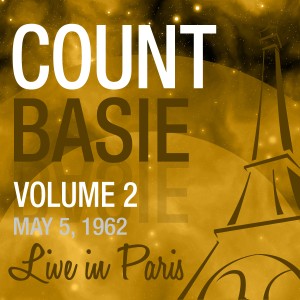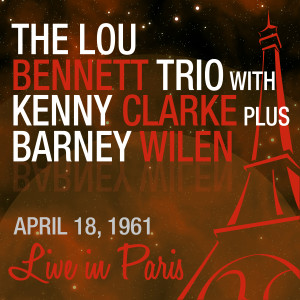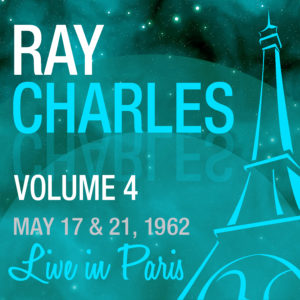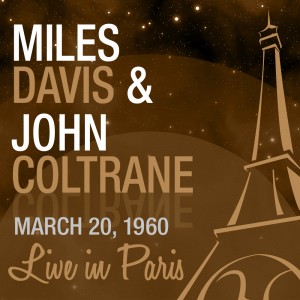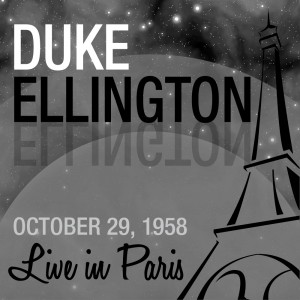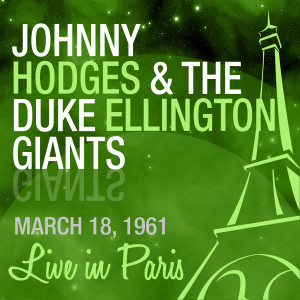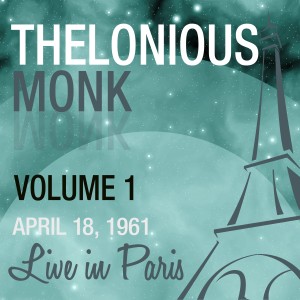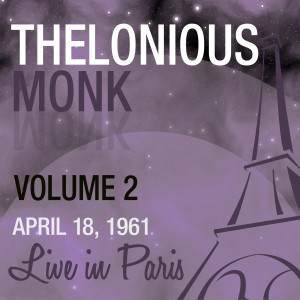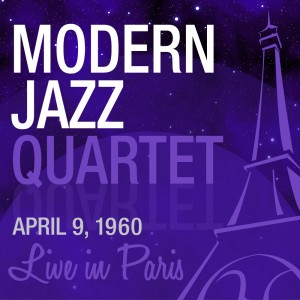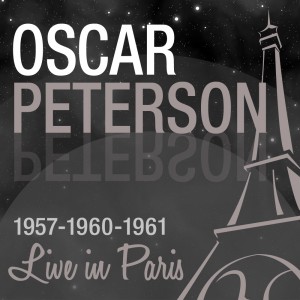POUR TÉLÉCHARGER, CLIQUEZ SUR LA POCHETTE – TO DOWNLOAD, CLICK ON COVER. AVAILABLE AT ALL STORES
 Le tout premier Festival de Blues à s’être produit en Europe. Par cette tournée initiatique en France, la génération yéyé découvre les fondations de la musique américaine. Des vieux bluesmen usés qui chantent leur vie réelle : emmerdes, désillusion, humiliation d’être noir. Cette première tournée accueille la crème du bues, comme John Lee Hooker, Sonny Terry & Brownie McGhee, ou le flamboyant T-Bone Walker, l’une des personnalités les plus marquantes de la musique noire. Document inédit et introuvable pendant 52 ans, gisant parmi d’autres bandes magnétiques dans le sous sol d’un grand nom du jazz, de la presse et de l’art. Daniel, merci.
Le tout premier Festival de Blues à s’être produit en Europe. Par cette tournée initiatique en France, la génération yéyé découvre les fondations de la musique américaine. Des vieux bluesmen usés qui chantent leur vie réelle : emmerdes, désillusion, humiliation d’être noir. Cette première tournée accueille la crème du bues, comme John Lee Hooker, Sonny Terry & Brownie McGhee, ou le flamboyant T-Bone Walker, l’une des personnalités les plus marquantes de la musique noire. Document inédit et introuvable pendant 52 ans, gisant parmi d’autres bandes magnétiques dans le sous sol d’un grand nom du jazz, de la presse et de l’art. Daniel, merci.
The very first Blues Festival ever to take place in Europe. With this initial tour in France, the rock n’ roll kids discover the roots of American music. These are tired old bluesmen who sing about their real life: daily hassles, disappointments, humiliation to be black. This first American Folk Blues Festival tour gathers the top of the heap in blues, like John Lee Hooker, Sonny Terry & Brownie McGhee, or the bombastic T-Bone Walker, one of the most striking personalities in black music.This recording was nowhere to be found for 52 years. It lay among other tapes in the basement of a very famous jazz promoter. Daniel, thanks.
DISTRIBUTOR: IDOL
 This 1962 concert by Louis Armstrong & His All Stars is excellent. Satchmo is the consummate entertainer, frequently talking to the audience with an enthusiasm that jazz performers, as a whole, have long since abandoned in the following decades. There’s still plenty of fire in Armstrong‘s trumpet playing as well. The interplay among the leader’s trumpet, trombonist Trummy Young, and clarinetist Joe Darensbourg (who replaced Barney Bigard) on « (Back Home Again in) Indiana » is superb, and pianist Billy Kyle and bassist Billy Cronk also have brief solo features in addition to serving in the front line. Kyle is featured at length in the introduction to a foot-tapping version of « When I Grow Too Old to Dream. » Armstrong also covers inevitable requests such as « When the Saints Go Marchin’ In, » « Struttin’ With Some Barbecue, » and « St. Louis Blues » (which features singer Jewel Brown) with time-tested arrangements that still pleased his wide audience. This album is one of the better Louis Armstrong concerts from the last decade of his life and is warmly recommended. Allmusic.com
This 1962 concert by Louis Armstrong & His All Stars is excellent. Satchmo is the consummate entertainer, frequently talking to the audience with an enthusiasm that jazz performers, as a whole, have long since abandoned in the following decades. There’s still plenty of fire in Armstrong‘s trumpet playing as well. The interplay among the leader’s trumpet, trombonist Trummy Young, and clarinetist Joe Darensbourg (who replaced Barney Bigard) on « (Back Home Again in) Indiana » is superb, and pianist Billy Kyle and bassist Billy Cronk also have brief solo features in addition to serving in the front line. Kyle is featured at length in the introduction to a foot-tapping version of « When I Grow Too Old to Dream. » Armstrong also covers inevitable requests such as « When the Saints Go Marchin’ In, » « Struttin’ With Some Barbecue, » and « St. Louis Blues » (which features singer Jewel Brown) with time-tested arrangements that still pleased his wide audience. This album is one of the better Louis Armstrong concerts from the last decade of his life and is warmly recommended. Allmusic.com
Julian « Cannonball » Adderley , alto sax / Nat Adderley , cornet / Victor Feldman , piano – (vibraphone on 7) / Sam Jones , bass – (cello on 7) / Ron Carter , bass on 7 / Louis Hayes , drums
track 1 and 3 are from the concert SALLE PLEYEL ,November 25 1960 – all other tracks recorded in PARIS ,OLYMPIA April 15 , 1961
The first three cuts of this album are the first traces of Cannonball in France. Today, they seem especially short to us. But the Adderley brothers were not the only ones playing on this Jazz at the Philharmonic tour organized by Norman Granz. Also on the trip : Coleman Hawkins, Benny Carter, Don Byas, Dizzy Gillespie, Stan Getz, Lalo Shifrin, J.J. Johnson. Sorry there is so little. The other five titles are from the April 15, 1961 concert.
Two changes in the rhythm section of this second Julian and Nat Adderley Quintet : Bobby Timmons is replaced by the English pianist-vibraphonist Victor Feldman (1934-1987) and, on one piece, the addition of then-unknown Ron Carter, which allows bass player Sam Jones (1924-1981) to show off on cello. Let’s say it flat out : these new players in no way detract from the group’s musical purpose. In fact, Feldman’s style is literally a carbon copy of Timmons’ . You could even say it’s an « overlay, » given those chords which Feldman plays with as much gusto as did the too-quickly-disappeared composer of Moanin (whom Nat Adderley cites in Worksong) . You can hear this inspiration on the vibraphone in In Walk Ray. As for Louis Hayes, « he takes care of business, » as the group’s leader puts it. And when you realize how hard it is to play drums well (and especially, to backup and accompany soloists well) , this statement is in no way pejorative. In fact, have you ever heard anyone complain that someone is doing exactly what is expected of him ? Especially with that speed and regular beat !
The listener will clearly hear what characterizes each of these two concerts what makes them different and what makes them alike. While it seems that the « go for it » aspect never wanes, the time factor does sway the course of the protagonists. That’s why the second concert seems richer to many listeners. Richer, because it’s more relaxed. Richer, because it’s less constrained. Jazz in whatever form does not like boundaries. The listener is always frustrated by the break. That’s how much these musicians know how to take their listeners to the height of pleasure. You have to wonder how they can bring themselves to stop, and also why they do so and interrupt our happiness. Richer and deeper, too. The songs selected, which as is his habit, Cannonball announces with a politeness that is not simply professional, but noble are more complex and weightier. Jeannine rings out like a triumphant hymn, and Arriving Soon echoes back, full of political undertones that Cannonball is careful not to hide. The funky well-stressed tempo of The Chant (where in the chorus, the best compound swing reaffirms itself), contrasts with the softness of Serenity. And it is surely not due to luck that the quintet ends with Bohemia After Dark : The Cafe Bohemia is where Cannonball made is smashing debut in 1955, at the invitation of bass player Oscar Pettiford, the composer of the piece.
François-Rene Simon (Jazz Magazine)
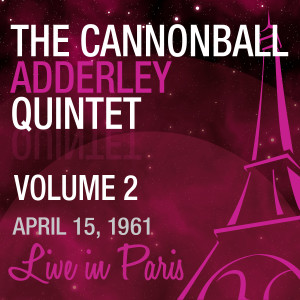 Nat Adderley (cornet) Cannonball Adderley (alto saxophone) Victor Feldman (piano – vibraphone – Sam Jones (bass) Louis Hayes (drums)
Nat Adderley (cornet) Cannonball Adderley (alto saxophone) Victor Feldman (piano – vibraphone – Sam Jones (bass) Louis Hayes (drums)
Nat King Cole with Quincy Jones,April 19 1960

 Fifty years ago, on February 15, 1965, the singer/jazzman Nathaniel Cole died of chest cancer. He was 45 years old. It is bizarre twist of fate that live-in-paris.fr was recently allowed to go through the tape archives of the most important proponent of jazz music in France. Among many fabulous unreleased concerts, this one with Nat Cole backed by the full Quincy Jones Big Band is definitely an historical document that shows his flawless vocal talent together with his superb pianistic virtuosity.
Fifty years ago, on February 15, 1965, the singer/jazzman Nathaniel Cole died of chest cancer. He was 45 years old. It is bizarre twist of fate that live-in-paris.fr was recently allowed to go through the tape archives of the most important proponent of jazz music in France. Among many fabulous unreleased concerts, this one with Nat Cole backed by the full Quincy Jones Big Band is definitely an historical document that shows his flawless vocal talent together with his superb pianistic virtuosity.
Vol 1: Sonny Cohn, Thad Jones, Joe Newman, Snooky Young (tp) / Al Grey, Benny Powell, Henry Coker (tb) / Marshall Royal (as,cl) / Frank Wess (as,ts,fl) /Frank Foster (ts,cl) / Billy Mitchell (ts) / Charlie Fowlkes (bari) / Count Basie (p) / Freddie Green (g) / Eddie Jones (b) / Sonny Payne (d) / Joe Williams (voc #17-21)
This 1960 performance by Count Basie at the Palais de Chaillot in Paris is representative of the heights of the band during the era in which Thad Jones, Joe Newman, Frank Foster, Marshall Royal and Frank Wess were all a part of the group. The set list is diverse, blending originals by bandmembers and Neal Hefti (one of the most prolific contributors to Basie at the time), favorites from other bands’ repertoire and a few blues. With a rock-solid rhythm section (Freddie Green, Eddie Jones and Sonny Payne) led by Basie, the focus is on the horn soloists and the tight, consistently swinging ensembles. Highlights include the strutting « Blues in Hoss’ Flat, » « Makin’ Whoopee » (with its delicious vocal-like muted trombone, probably by Al Grey) and band favorite « ‘Shiny Stockings. » Allmusic.com
Vol. 2: Thad Jones, Snooky Young, Al Aarons, Sonny Cohn.(tp)
Henry Coker, Quentin Jackson, Benny Powell.(tb)
Marshall Royal.(as,cl); Frank Wess.(as,ts,fl); Eric Dixon, Frank Foster.(ts); Charlie Fowlkes.(bs)
Count Basie.(p); Freddie Green.(g); Eddie Jones.(b); Sonny Payne.(ds).
This 1962 set by Count Basie finds the band in top form. The brisk performance of « Jumpin’ at the Woodside, » long a part of the Basie band’s book, seems infused with new energy as the soloists hand it off to one another, with a number of riffs incorporated from other songs. Basie‘s opening solo to « Li’l’ Darlin » makes one wish that he would take a few more solos, but that just wasn’t his way. « April in Paris » became a band staple with the swinging chart featuring Thad Jones‘ famous quote from « Pop Goes the Weasel » and this version remains fresh. The unidentified flautist steals solo honors in the brisk treatment of « Cute. » O.C. Smith is a capable vocalist in « All Right, Okay, You Win » though he isn’t quite at the level of Joe Williams. Allmusic.com
Sidney Bechet (clarinet, soprano saxophone); André Réwéliotty (clarinet); Guy Longnon, Buck Clayton (trumpet); Vic Dickenson (trombone); Yannick Singéry, George Wein (piano); Poumi Arnaud, Marcel Blanche, Kansas Fields (drums)
CLICK ON PRINT TO ENLARGE
Début des sixties, trois expat’s américains forment la version française d’un style qui fait fureur aux USA, le trio avec orgue Hammond. C’est Jimmy Smith le maître, mais Lou Bennett, qui vient de se relocaliser de Baltimore à Paris, est un disciple de talent. Kenny Clarke est le batteur attitré des jazzmen parisiens. Il réside à Paris depuis 1956. Jimmy Gourley lui aussi vit en France depuis le début des années cinquante ; quand à Barney Wilen, ce franco-américain par son père est une des tenor saxes emblématiques des clubs de jazz de St Germain. C’est Daniel Filipacchi ( Pour ceux qui aiment le jazz) qui produit le groupe ; il fera de « Brother Daniel » l’indicatif de sa nouvelle émission sur Europe N°1, Salut les copains…
Formed in the early sixties, this jazz combo of three American expats is the French equivalent of the ‘in’ style of the era: the Hammond organ trio. Jimmy Smith is its undisputed master; however Lou Bennett, who has recently moved from Baltimore to Paris, is a talented disciple. Kenny Clarke is the official drummer for all jazzmen in Paris. He lives here since 1956. Jimmy Gourley also lives in France since the fifties; and Barney Wilen, the franco-American tenor sax, is a cult musician in the Saint Germain jazz clubs. Daniel Filipacchi , a top jazz figure with his radio jazz program, is the producer.
Art Blakey recorded prolifically during his long career, and one of his best editions of the Jazz Messengers featured Wayne Shorter, Bobby Timmons, Lee Morgan, and Jymie Merritt, the group present on this live two-CD set, which was recorded in 1961 at the Olympia in Paris. Since this concert originated from a taped broadcast, the sound is inferior to commercial live recordings made by Blakey for various U.S. labels, though it is a thoroughly enjoyable evening of music. Timmons‘ « Dat Dere » (particularly with Morgan‘s hilarious incorporation of the theme from the era’s hit television show Perry Mason) and « Moanin' » are among the highlights of this release, along with the extended set closer, a spirited take of « A Night in Tunisia. » Although a lot of familiar ground is covered and none of the tracks eclipse their better-known counterparts on Blakey‘s major jazz label live releases, this set is worth seeking by Blakey fans. Allmusic.com
Lee Morgan (trumpet) Wayne Shorter (tenor saxophone) Bobby Timmons (piano) Jymie Merritt (bass) Art Blakey (drums)
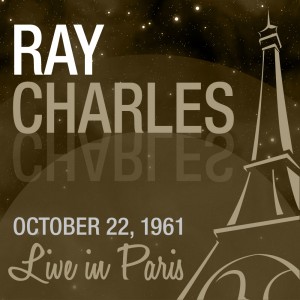 Soon after his triumph in Antibes, Ray returned to Europe and France, from 18 to 24 October 1961, for concerts in Zurich (18th), Lyon (19th), and four days of shows with his new big band at the (then new) Palais des Sports in Paris (21st – 24th). These two series of gigs definitively established Charles’ fame in France, where he not only became the #1 bestselling jazz artist for many years to come, but also a seasonal phenomenon, who would be warmly welcomed to the country’s biggest venues and festivals almost every year for the next 40 years, through the years consistently covered by French radio and TV, and reaching a fame and status that matched the appreciation for the most famous local chanteurs. Contemporary industry magazines counted that the total series attracted a record-breaking total of 35,000 people. RayCharlesVideoMuseum
Soon after his triumph in Antibes, Ray returned to Europe and France, from 18 to 24 October 1961, for concerts in Zurich (18th), Lyon (19th), and four days of shows with his new big band at the (then new) Palais des Sports in Paris (21st – 24th). These two series of gigs definitively established Charles’ fame in France, where he not only became the #1 bestselling jazz artist for many years to come, but also a seasonal phenomenon, who would be warmly welcomed to the country’s biggest venues and festivals almost every year for the next 40 years, through the years consistently covered by French radio and TV, and reaching a fame and status that matched the appreciation for the most famous local chanteurs. Contemporary industry magazines counted that the total series attracted a record-breaking total of 35,000 people. RayCharlesVideoMuseum
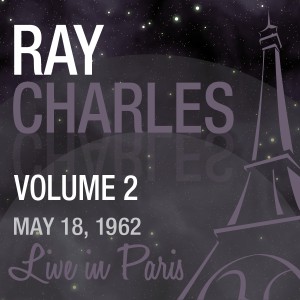 In 1961 his two triumphant concert series in France had given Ray Charles a semi-devine status in France. But when he returned to Paris on 17 May 1962 the word-of-mouth had done its work, and the « semi » was gone. The welcoming crowd of fans and journalists at Orly Airport treated him « tel un dieu », like a god.From the 17th to the 22nd the Ray Charles group performed another totally sold out and very well received concert series at l’Olympia in Paris. On May 18 the set includes Horace Silvers’s « Doodlin' » with an interesting warm-up , along with all of Ray’s landmark tunes, plus a regular feature of The Genius’ concerts: an unknown improvised blues number, that will never again appear in any other venue.
In 1961 his two triumphant concert series in France had given Ray Charles a semi-devine status in France. But when he returned to Paris on 17 May 1962 the word-of-mouth had done its work, and the « semi » was gone. The welcoming crowd of fans and journalists at Orly Airport treated him « tel un dieu », like a god.From the 17th to the 22nd the Ray Charles group performed another totally sold out and very well received concert series at l’Olympia in Paris. On May 18 the set includes Horace Silvers’s « Doodlin' » with an interesting warm-up , along with all of Ray’s landmark tunes, plus a regular feature of The Genius’ concerts: an unknown improvised blues number, that will never again appear in any other venue.
 The May 20 concert is a rarity: Ray plays the organ throughout the date, which gives a definite « churchy » spirit to « I Wonder », « Sticks and Stones » or « What’d I Say ».The Paris personnel was not too different from the October ’61 line-up. I guess everybody wanted to experience (again) what it was like to be world famous in France: Marcus Belgrave, Wallace Davenport, Phil Guilbeau, John Hunt – trumpets; Henderson Chambers, James Harbert, Keg Johnson, Leon Comegys – trombones; Hank Crawford, Rudy Powell – alto saxophones; David Newman – tenor saxophone, alto saxophone, flute; Don Wilkerson – tenor saxophone; Leroy Cooper – baritone saxophone; Sonny Forriest – guitar; Edgar Willis – bass; Bruno Carr – drums. The Raelettes were the same group of girls as in ’61: Pat Lyles, Margie Hendricks, Gwen Berry, and Darlene McCrea.
The May 20 concert is a rarity: Ray plays the organ throughout the date, which gives a definite « churchy » spirit to « I Wonder », « Sticks and Stones » or « What’d I Say ».The Paris personnel was not too different from the October ’61 line-up. I guess everybody wanted to experience (again) what it was like to be world famous in France: Marcus Belgrave, Wallace Davenport, Phil Guilbeau, John Hunt – trumpets; Henderson Chambers, James Harbert, Keg Johnson, Leon Comegys – trombones; Hank Crawford, Rudy Powell – alto saxophones; David Newman – tenor saxophone, alto saxophone, flute; Don Wilkerson – tenor saxophone; Leroy Cooper – baritone saxophone; Sonny Forriest – guitar; Edgar Willis – bass; Bruno Carr – drums. The Raelettes were the same group of girls as in ’61: Pat Lyles, Margie Hendricks, Gwen Berry, and Darlene McCrea.
John Coltrane (soprano, tenor saxophone) Eric Dolphy (alto saxophone, bass clarinet, flute) McCoy Tyner (piano) Reggie Workman (bass) Elvin Jones (drums)
John Coltrane’s quintet with Eric Dolphy was recorded extensively during their European tour in 1961, with many of the concerts evidently being broadcast and taped by private collectors. The music heard on this two-CD set was previously available from the now-defunct Mag(Luxe) label, containing both shows from Paris in 1961. The sound quality is better than average, though Elvin Jones‘ drums are the most prominent instrument, but the rest of the band can be heard. Coltrane tends to solo long, not always giving Dolphy and Tyner the room they deserve, though they are effective when featured. The saxophonist really goes overboard in the extended take of his composition « Blue Train » in the first concert. The obvious highlights for many Coltrane fans are the two lengthy interpretations of « My Favorite Things » that feature the leader’s dancing soprano sax, Dolphy‘s magical flute, and Tyner. The discography of all known recordings made during the tour is given plus detailed liner notes, though there is a glaring error quoting Dolphy as taking part in a November 1964 radio interview, which was impossible given that he died on June 29th of that same year.Allmusic.com
 This collection includes an extended variety of excerpts from the two concerts that John Coltrane gave with his quartet at the Paris Olympia on November 17, 1962.
This collection includes an extended variety of excerpts from the two concerts that John Coltrane gave with his quartet at the Paris Olympia on November 17, 1962.
In addition to the 3 tracks released on the album « The Paris Concert », John Coltrane Live In paris includes 85 additional and previously unreleased minutes of music performed by the quartet on that date : “Bye Bye Blackbird”, “Impressions”, ”My Favorite Things”, and alternate versions of « Mr. P.C. » and « Ev’ry time We Say Goodbye » . You can also hear Norman Granz introduction of the band, and appreciate the enthusiastic reaction of the Parisian jazz fans, a far cry from the way the musician was booed the first time he played in Paris, two years before.
This album has an historical value. When Miles Davis arrived in Europe with what he himself described as “the best small group of all time”, tension was high. Davis had managed to keep the saxophonist in the group, despite his wish to start his own band. It was the first time Coltrane came to Europe, and the last time he played with Miles.
Coltrane ‘s performance went far beyond Miles’. The audience, who had come to listen to Miles, let out appreciative whistles and negative boos together. Miles played little and chose to remain in the background. He knew what was happening, that Coltrane was opening a new door. Hear it now for yourself in this 2 album jazz milestone.
On page 249 of his autobiography, Miles Davis recounts driving around Philly with Jimmy Heath, recalling that he « probably was complaining to him about Sonny Stitt playing the wrong [stuff] on ‘So What,’ because he would always [mess] up on that tune. »
The marvel is that Miles called on Stitt to replace Coltrane in the first place. But Wayne Shorter wanted to stay on with Art Blakey, so the most complete and polished bebop player of them all, a saxophonist embodying, but not extending beyond, the previous tradition took the coveted chair. Until these recordings of an October 11, 1960 Paris concert came to light, the results of the unlikely association between Miles and Stitt remained speculative. There’s an earlier recording of a 1960 Paris date with Davis’ quintet, only with Coltrane. Most of us assumed the Stitt edition of Miles’ group had never been recorded.
So now we know what Miles was talking about. Stitt’s musical style—about melodic « formulas » and rhythmic/harmonic « closure »—is clearly « wrong » for Miles, but not necessarily for Sonny. On all of the tunes, including the modal « So What, » Stitt « locks » into the time, much like a Coleman Hawkins, and plays within the harmonies of the tune, coming back to the tonic note at every opportunity. Miles if anything overplays, as though he’s determined to rub Sonny’s nose in the new music until he gets it.
Sonny will have none of it. He counter-punches with his very best shots, exhausting the melodic/harmonic vocabulary inherited from Bird and Diz. The result is a dazzling display of disparate pyrotechnics, perhaps the last time Miles would play this aggressively on record as well as the first time he would play this consistently « outside » the harmonies of the tunes. For my money, this quintet is more exciting, perhaps even breath-taking, than the Shorter-Hancock-Carter-Williams unit that would soon succeed it.
Samuel Chell, allaboutjazz.com
Personnel: Miles Davis, trumpet; Sonny Stitt, alto and tenor saxophones; Wynton Kelly, piano; Paul Chambers, bass; Jimmy Cobb, drums.
 This CD is the second of two volumes recorded during a 1958 Paris concert. None of the music will be unfamiliar to Ellington fans. « El Gato, » a feature for the four trumpets, includes high-note specialist Cat Anderson as well as Clark Terry, Shorty Baker, and Ray Nance in smaller roles. The sound on « Stompy Jones » is a little erratic due to flaws in the master tape, though baritone saxophonist Harry Carney, clarinetist Jimmy Hamilton, and trombonists Britt Woodman and Quentin Jackson all shine. « Hi Fi Fo Fum » is not as common a piece on live Ellington releases, though the lengthy (and mandatory) « dread » medley of Ellington‘s greatest hits is present. The CD wraps with yet another rendition of tenor saxophonist Paul Gonsalves‘ famous solo that became a hit after the historic 1956 Newport concert. Although there were better songs recorded during this concert that were not released, most Ellington fans should consider acquiring this CD and its companion volume. Allmusic.com
This CD is the second of two volumes recorded during a 1958 Paris concert. None of the music will be unfamiliar to Ellington fans. « El Gato, » a feature for the four trumpets, includes high-note specialist Cat Anderson as well as Clark Terry, Shorty Baker, and Ray Nance in smaller roles. The sound on « Stompy Jones » is a little erratic due to flaws in the master tape, though baritone saxophonist Harry Carney, clarinetist Jimmy Hamilton, and trombonists Britt Woodman and Quentin Jackson all shine. « Hi Fi Fo Fum » is not as common a piece on live Ellington releases, though the lengthy (and mandatory) « dread » medley of Ellington‘s greatest hits is present. The CD wraps with yet another rendition of tenor saxophonist Paul Gonsalves‘ famous solo that became a hit after the historic 1956 Newport concert. Although there were better songs recorded during this concert that were not released, most Ellington fans should consider acquiring this CD and its companion volume. Allmusic.com
 This collection of three separate dates in 1961 and 1962 in Paris shows Ella in her top shape. Backed By Tommy Flanagan in ’61 and most likely Lou Levy in ’62, Ella charms the Parisian crowd with a variety of renditions from her albums Ella Fitzgerald Sings the Cole Porter Song Book and Ella Fitzgerald Sings the Harold Arlen Songbook as well as four George et Ira Gershwin compositions. Also a couple of rarities: live versions of Basie’s “Lil’ Darlin’” and Nat Cole’s “Straighten Up and Fly Right” make this Volume 3 a treat for Ella’s fans.
This collection of three separate dates in 1961 and 1962 in Paris shows Ella in her top shape. Backed By Tommy Flanagan in ’61 and most likely Lou Levy in ’62, Ella charms the Parisian crowd with a variety of renditions from her albums Ella Fitzgerald Sings the Cole Porter Song Book and Ella Fitzgerald Sings the Harold Arlen Songbook as well as four George et Ira Gershwin compositions. Also a couple of rarities: live versions of Basie’s “Lil’ Darlin’” and Nat Cole’s “Straighten Up and Fly Right” make this Volume 3 a treat for Ella’s fans.
Between 1958 and 1960, Stan Getz lived in exile…
Stan moved to Copenhagen, Danemark, where he established a family base from where he could travel to various gigs in Europe. Monica , his charming and young wife, was swede, so there was no language barrier for her, nor for Stan’s 4 children, who adapted quite easily. Stan, on the other hand, did not master the Danish tongue as quickly as neede. “ Everybody speaks English here, he said in an article in the french monthly Jazz Magazine, and they all want to share this with me.” Being away from the homeland of jazz is a benefit for the 33 year old musician. It allows him to even more involved in his music. Reviewing a new recording of Stan taped in Europe, critic Ira Gitler recently commented: “Stan’s actual way of playing shows that he leads today a happy and quiet life, without giving up his own conceptions.”So Stan will crisscross the continent during 1960 from his Danish base, and play at least 3 times in the French capital: on March 21, at first, opening for the now famous Miles Davis-John Coltrane gig; April 30 with Dizzy Gillespie, November 25 again with Diz and J.J. Johnson. Among he tracks here, a superb « Catch as Catch Can » by Gerry Mulligan with pianist Jan Johansson, « Pernod » by Johnny Mandel with the same rhythm section. With Dizzy, « Bernie’s Tune » and an uptempo unidentified track. All this and more is available as of February 17, right here and on all download platforms (i tunes, Amazon etc.)
Entre 1958 et 1960, Stan Getz est devenu Européen… Extrait de Jazz magazine de 1960 :
Stan en exil
Stan Getz s’est établi dans la banlieue de Copenhague et y a installé sa famille. Avec sa femme Monica, une jeune et charmante suédoise, et ses quatre enfants, il occupe à Lyngby une demeure princière…La famille Getz, pour s’intégrer à la vie danoise, a tout d’abord connu le problème de la langue. Les enfants furent les premiers à savoir parler un danois acceptable. Pour Monica, pas de difficultés : le suédois est proche du danois. Seul S Stan Getz en est encore aux premiers mots : « je ne fais pas de grands progrès, explique-t-il, l’immense majorité des gens parlent anglais, et chacun veut le parler avec moi… »Son éloignement de la terre du jazz ne l’empêche pas de l’aller de l’avant, bien au contraire. Il semble même que pour le jeune musicien de 33 ans l’exil volontaire soit bénéfique, et lui permette de se consacrer plus entièrement à sa musique.Le critique américain Ira Gitler note récemment, à propos d’un microsillon ( disque) réalisé en Europe :« Le jeu actuel de Stan révèle que le musicien connait aujourd’hui une vie calme et heureuse, mais sans relâchement ni abandon des conceptions qui lui sont propres. »Stan va donc sillonner l’Europe pendant cette année 1960 depuis sa base danoise, et se retrouver ainsi à trois reprises au moins en France : le 21 mars en première partie du concert culte de Miles Davis et John Coltrane, le 30 Avril avec Dizzy Gillespie, le 25 Novembre encore avec Dizzy et J.J. Johnson. Parmi les titres, un magnifique « Catch as Catch Can » de Gerry Mulligan avec le pianiste Jan Johansson, « Pernod » de Johnny Mandel avec la même section rythmique. Avec Dizzy, « Bernie’s Tune » et un morceau non identifié sur un tempo d’enfer. A découvrir donc ici dès le 17 février, et sur toutes les plateformes de distribution (i tunes, Amazon etc.)
Johnny Hodges, and the Ellington Giants, March 18, 1961
| Ray Nance (trumpet, violin) Lawrence Brown (trombone) Johnny Hodges (alto saxophone) Harry Carney (baritone saxophone) Al Williams (piano) Aaron Bell (bass) Sam Woodyard (drums) |
These sessions have a particular feeling. In late 1959, 26-year-old trumpeter/arranger Quincy Jones was engaged to conduct a jazz band for a musical called Free and Easy, the songs for which were written by Harold Arlen and Johnny Mercer. The European tour closed in Paris in February 1960 without finishing its engagement in Paris, closing down amid recriminations and stranding the cast and the orchestra. Looking for help, Jones turned to French friend Daniel Filipacchi. Daniel then booked the Studio Hoche, a recording studio in the Place de l’Etoile area in Paris. A week of concerts was set, but even thought the active American expats of Paris lobbied for Jones, it drew a small crowd of Quincy Jones followers. Quoted in Musician magazine, Jones said about the ordeal, « We had the best jazz band in the planet, and yet we were literally starving. That’s when I discovered that there was music, and there was the music business. If I were to survive, I would have to learn the difference between the two. » This version of Horace Silver’s “Doodlin’” is highlighted by trumpeter Clark Terry, who breaks into a blues impro. The ambiance is definitely US, with the fans loud and happy throughout the number.
« Quelle époque ! » par Jazz News
Comme la découverte par le public européen de l’orchestre phare du jazz West Coast, Shelly Manne and his Men où brillent Richie Kamuca et Joe Gordon. Stan Getz s’y taille également la part belle, soit avec son éphémère quartette venu du Danemark…
Par Bruno GUERMONPREZ – JAZZ NEWS
MJQ presented jazz in the context of a formally structured environment, much like a chamber group in the classical context. Within the band, the groove of Milt « Bags » Jackson‘s vibes met the solid swing of Connie Kay‘s drums, the funky strut of Percy Heath‘s bass, and the elegant classicism of John Lewis‘s piano. The MJQ were able, in a context that pushed at jazz’s boundaries from the outside, to create a music that swung without edges or fragmented harmonic structures. Instead — as this album perhaps more than any of their studio recordings exemplifies — they used concepts of time, space, meter, rhythm, and changes to weave together a seamless whole, where melody grounded the improvisation but never really restricted it. The kind of graceful counterpoint that exists between Lewis and Jackson here is instinctual at this time in 1960. The show included the finest moments of their early recording career in a live setting. One listen to « Django » will make your head swim, with its sparse rhythmic texture that is still driving and Lewis‘ rag melody line when it encounters the pure stretch of the polytonal rhythms Jackson is laying down. If it weren’t for Heath the entire thing would become unglued, because he was the hinge on this set. Elsewhere on « I Should Care, » Lewis brings his solo down to a rudimentary three-finger patter-without chords that takes the line apart harmonically while never straying from anything in the architecture of the tune. Much later, on the encore « Round Midnight, » MJQ take Monk‘s masterwork and turns it into a near rondo as time changes are constant in the first 16 bars. Allmusic.com
Gerry Mulligan returns to France with a reformed quartet in 1962. No piano, but still a pianist…Mulligan himself handles the keys in « Spring is Sprung », and plays a solo again in « Darn That Dream ».Bob Brookmeyer sxitches from trombone to piano in « Subetrranean Blues ». Bill Crow, the bassist, later wrote 2 jazz books, and the drummer, Gus Johnson, has played with all the top jazz icons, Ella, Stan, Oscar…
The earliest date features Peterson with Herb Ellis and Ray Brown in a swinging rendition of « The Man I Love » and adds guests Jo Jones and Roy Eldridge (the latter singing the somewhat-tiresome nursery rhyme medley « School Days »), along with violinist Stuff Smith, who enlivens the proceedings considerably with his slashing attack in an up-tempo « Bugle Call Rag. » Ellis, who left Peterson in 1958, returns for a guest appearance in the 1960 show, which is highlighted by an explosive « Daahoud, » though the sound quality throughout this set is disappointing. Drummer Ed Thigpen takes Ellis‘ place on the remainder of the disc. The 1961 tracks begin with Peterson‘s driving arrangement of « On Green Dolphin Street, » which is very similar to the one heard on his excellent The Sound of the Trio, while a pulsating interpretation of Duke Ellington‘s rarely performed « Band Call, » Benny Golson‘s lush ballad « I Remember Clifford, » and the swinging waltz « Where Do We Go From Here » also merit praise. Allmusic.com
May 8, 1957 Paris Olympia : Oscar Peterson, p – Ray Brown, b – Herb Ellis, gt – Jo Jones, ds – Roy Eldridge, tp & vocal on « Schooldays » – Stuff Smith, v.
April 30th, 1960: Oscar Peterson, p – Ray Brown, b – Herb Ellis, gt
February 28,1961: Oscar Peterson, p – Ray Brown, b – Ed Thigpen, ds
The Horace Silver Quintet, Februray 14, 1959
| Junior Cook, tenor sax |
| Blue Mitchell, trumpet |
| Gene Taylor, bass |
| Louis Hayes , drums |
| Horace Silver, piano |
January 1959, A few days after Fidel Castro’s arrival in Havana, Cootie Williams stops in  Paris at Daniel Flippachi’s request to perform at midnight at the Olympia Hall. This venue has a definite rhythm and blues feel with classics such as “Night Train” or guitarist-singer Larry Dale’s renditions of “Alright, OK…” or “Rock a While”. Organist Arnold Jarvis and tenor saxophonist George Clark share also some spotlight numbers. Its Cootie Williams at his relaxed best.
Paris at Daniel Flippachi’s request to perform at midnight at the Olympia Hall. This venue has a definite rhythm and blues feel with classics such as “Night Train” or guitarist-singer Larry Dale’s renditions of “Alright, OK…” or “Rock a While”. Organist Arnold Jarvis and tenor saxophonist George Clark share also some spotlight numbers. Its Cootie Williams at his relaxed best.



